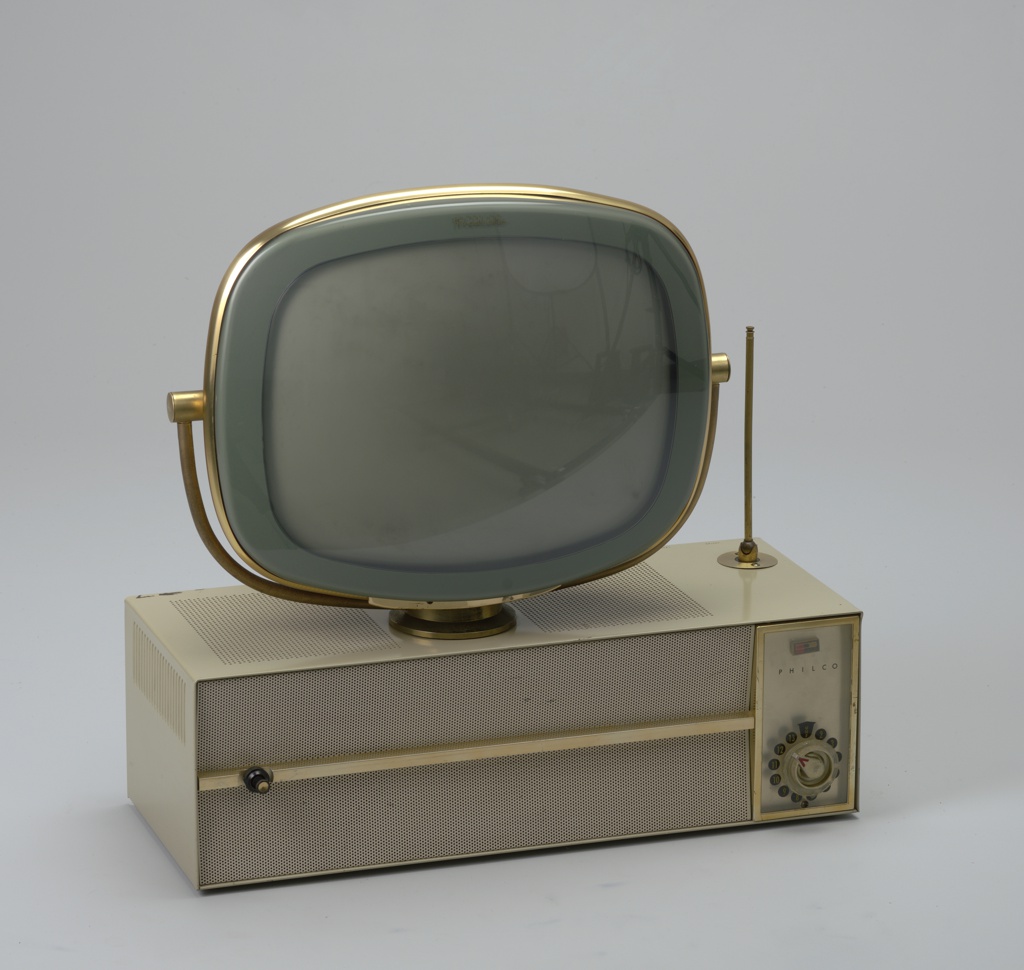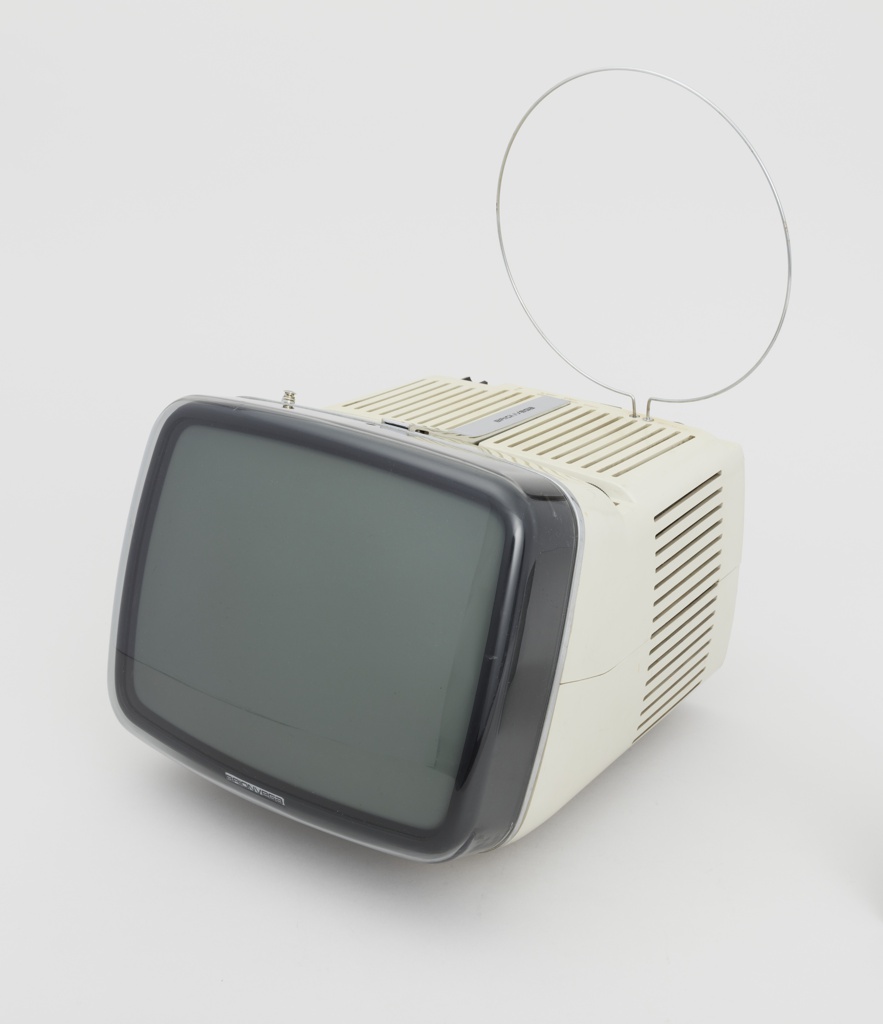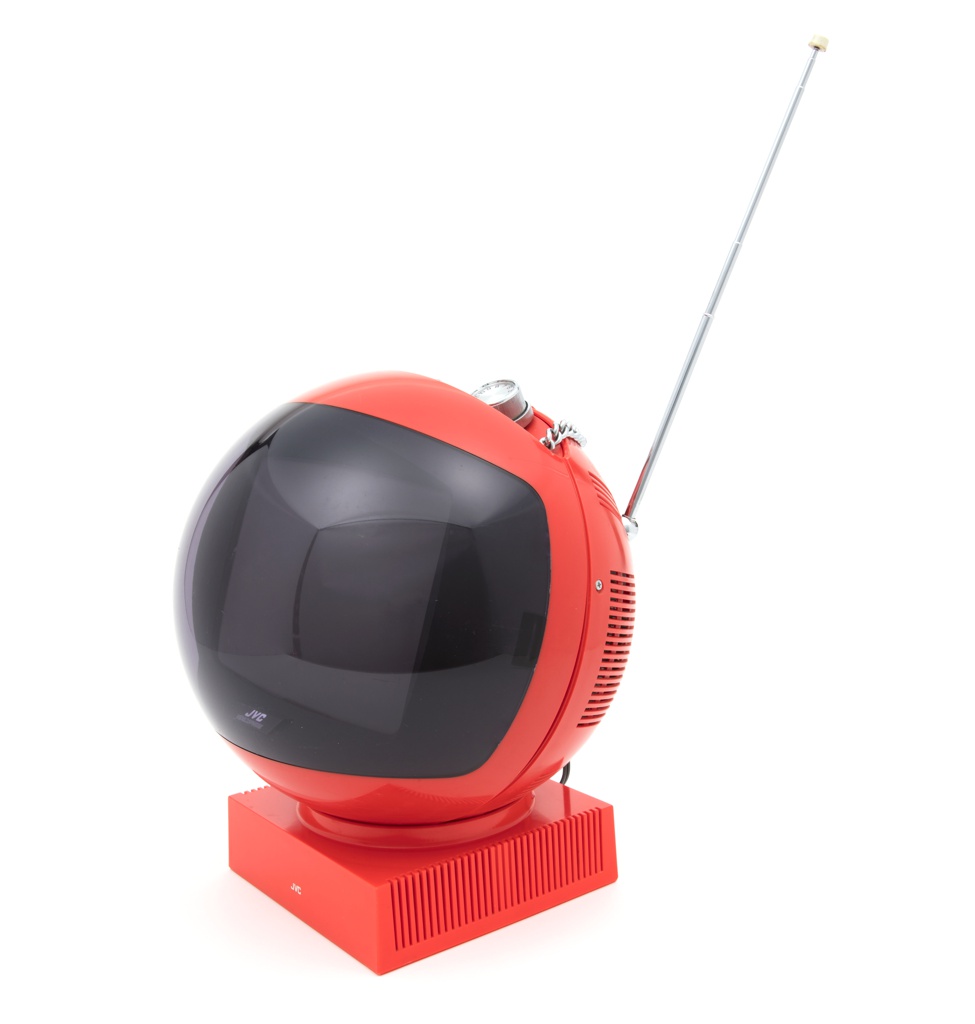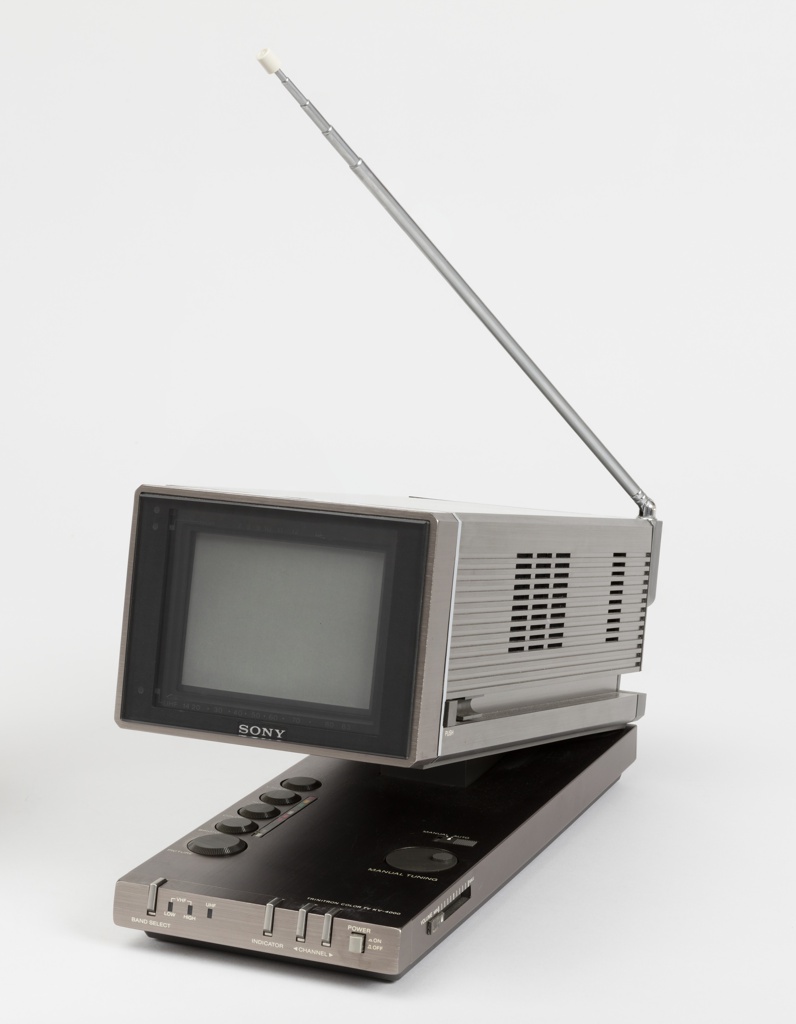Written by Marguerite Montecinos-Deppe
The United Nations has designated 2022 the International Year of Glass. Cooper Hewitt is celebrating the occasion with a yearlong series of posts focused on the medium of glass and museum conservation.
Our blog series on glass has so far examined ancient, historic, and artistic uses of glass. We turn to the ubiquitous nature of the medium today to look at glass with a technical use—screens—and, in particular, that anchor of American family home entertainment in the 20th century: the cathode ray tube (CRT) television.

Predicta Television, Princess Model, 1959; Manufactured by Philco (Philadelphia, PA, USA); Designed by Herbert V. Gosweiler (American, 1915–1991), Severin Jonassen (American, 1913–1998), and Richard Whipple (American, 1916–1964); Metal, glass, molded plastic; H x W x D: 62.2 x 62.5 x 27.3 cm (24 1/2 x 24 5/8 x 10 3/4 in.); Gift of Jan Staller in honor of Max Staller, 2008-29-1
On April 30, 1939, concurrent with the opening of the New York World’s Fair, television was inaugurated to the public and experienced for the first time. Signals sent from the top of the Empire State Building in New York City traveled across a 50-mile radius, translating into live moving images and sounds in the first television sets.
This remarkable technology was built in part on established glass blowing technologies. Physicists in the 19th century, such as Heinrich Geissler, William Crookes, and Karl Ferdinand Braun, discovered that by blowing a glass tube with a tight seal at either end and adding metal plates, or electrodes, at opposite ends of the tube, they could make an electric current from an external energy source glow. Tightening the vacuum seal meant the electrons in the current could form into a visible electron beam. Additionally, magnets on the outside of the tube deflected the beams, directing them to an internal plate coated with phosphorescent paint that glowed when struck with the beam. This system created the environment for the signaled moving image to be displayed.

Algol 11 Portable Television, 1964; Designed by Marco Zanuso (Italian, 1916–2001) and Richard Sapper (German, 1932–2015); Manufactured by Brionvega, S.p.A. (Milan, Italy); Plastic, acrylic (Perspex), chromium-plated metal; H x W x D: 23.5 × 26 × 31 cm (9 1/4 × 10 1/4 × 12 3/16 in.) Gift of George R. Kravis II, 2016-5-21
These developments led directly to the CRT television. CRTs, also called picture tubes, were manufactured by dropping molten glass into spinning funnel-shaped molds. The centrifugal force of the spinning resulted in glass walls of consistent thickness as well as an even coating of phosphors that both absorbed voltage and displayed the transmitted signals reflected on the coating. The larger the tube, the thicker the glass had to be to counter high voltage pressure. A small, cylindrical-shaped metal neck was fused to the narrow end of the funnel-shaped CRT. This component, known as an electric gun, contained current, which traveled at the speed of light. It decoded incoming signals (coming from a broadcast or network) into lines and patterns of light and dark that ultimately shaped pictures and moving images on the television, all in the blink of an eye.

Videosphere Portable Television, Model 3240, 1970; Manufactured by Victor Company of Japan, Ltd. (Tokyo, Japan); Plastic, acrylic, metal, chrome-plated metal; H x diam.: 36.2 × 24.1 cm (14 1/4 × 9 1/2 in.); Gift of George R. Kravis II, 2018-22-51
Once manufactured in the thousands, today CRT televisions are an obsolete technology that has been supplanted by liquid crystal displays (LCDs) or flat panel display TVs. As conservation of cathode ray tubes in museum collections has become critical for media and installation art of the 20th and early 21st centuries, much has been published about the challenges of this work due to the technology’s obsolescence. The continued scarcity of CRTs further complicates finding replacement parts that can make migrating media to a newer technology necessary, a significant decision in the preservation of the piece.

KV-4P1 Portable Color Television, 1981; Designed by Kawagoe Yoshinobu Nameki (Japanese) and Higashimurayama Shin Miyashita (Japanese); Manufactured by Sony Corporation (Tokyo, Japan); Aluminum, glass, chrome-plated metal, plastic; H x W x D: 12.4 × 12.1 × 35.6 cm (4 7/8 in. × 4 3/4 in. × 14 in.); Gift of George R. Kravis II, 2016-5-24
Television manufacturers differentiated themselves and their products not only through improving their television technology, but by creating stylish housings for their CRTs and circuitry, whether pieces of furniture occupying a family living room, or colorful trendy portable TVs for entertainment on the move. As a cultural object, the physical presence and variety of forms of CRT televisions has made the device iconic and a nostalgic touch point for what was once considered a mark of modernity.
Marguerite Montecinos-Deppe was Cooper Hewitt’s CUNY Cultural Corps intern (2021–22).